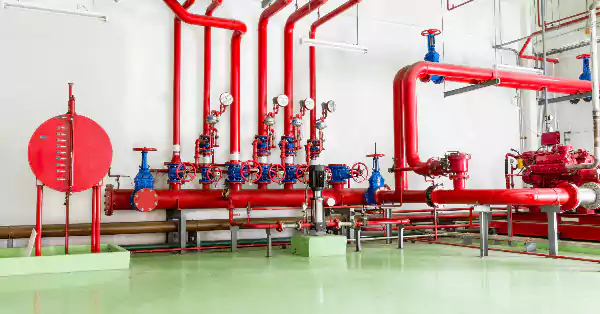- Full width
- Box
Fire Detection and Suppression Systems
WCSIPL provides an extensive range of turnkey services for fire safety solutions across diverse projects in India. Here's a summarized breakdown of the key aspects of your services.
Fire detection and suppression solutions are essential for safeguarding lives and property against the devastating effects of fires. These systems are designed to detect fires early, alert occupants or authorities, and deploy suppression measures to control or extinguish the fire. Here are some common fire detection and suppression solutions
We are Services / Solutions Provider of Fire Detection and Suppression Systems, Ionization Smoke Detectors, Photoelectric Smoke Detectors, Carbon Monoxide Detectors, Deluge Sprinkler Systems, Fire Extinguishers, Fire Suppression Systems, Gas Fire Suppression Systems, Aerosol Fire Suppression and our setup is in Pune, Maharashtra, India
Smoke Detectors
These devices detect the presence of smoke particles in the air, which can indicate the start of a fire. They are commonly used in homes, offices, and other indoor spaces.Ionization Smoke Detectors :
These detectors use a small amount of radioactive material to ionize the air inside the detector. When smoke particles enter the chamber, they disrupt the ionization, triggering the alarm.
Photoelectric Smoke Detectors :
These detectors use a light source and a light-sensitive sensor. When smoke particles scatter light into the sensor, it triggers the alarm
Combination Smoke Detectors :
These combine ionization and photoelectric technologies for faster and more accurate detection.
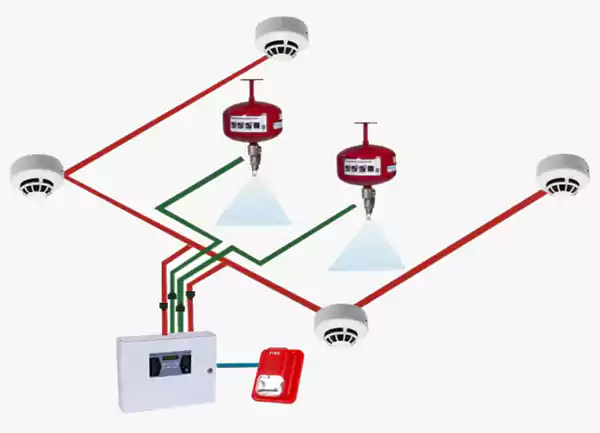
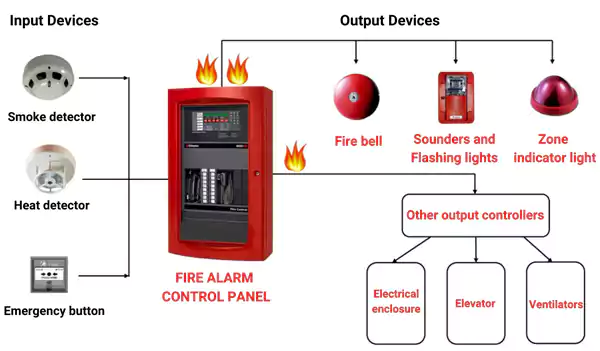
Heat Detectors
Heat detectors sense an increase in temperature in the environment and trigger an alarm if it exceeds a certain threshold. They are useful in areas where smoke detectors might lead to false alarms due to dust, steam, or cooking activities.Fixed Temperature Heat Detectors :
These detectors activate when the ambient temperature reaches a preset threshold.
Rate-of-Rise Heat Detectors :
These detectors activate if the temperature rises at a certain rate within a specified time frame.
Flame Detectors
These detectors use various technologies (UV, IR, or visible light sensors) to identify the presence of flames.Carbon Monoxide Detectors :
These devices detect the presence of carbon monoxide gas, which is often a byproduct of incomplete combustion and a significant danger in fires.
Fire Alarm Systems :
These systems incorporate various detectors and sensors to provide early warning in the event of a fire. They may include manual pull stations, control panels, and notification devices (e.g., sirens, strobe lights).
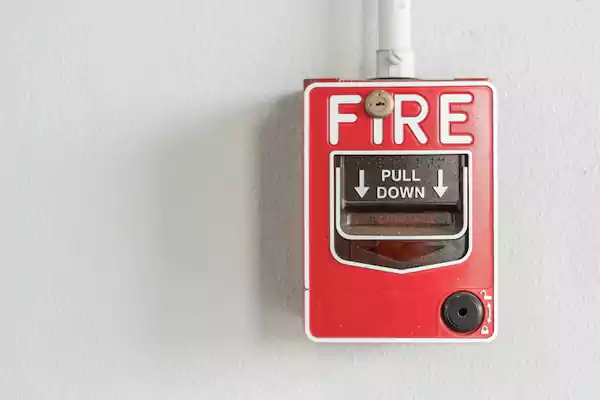
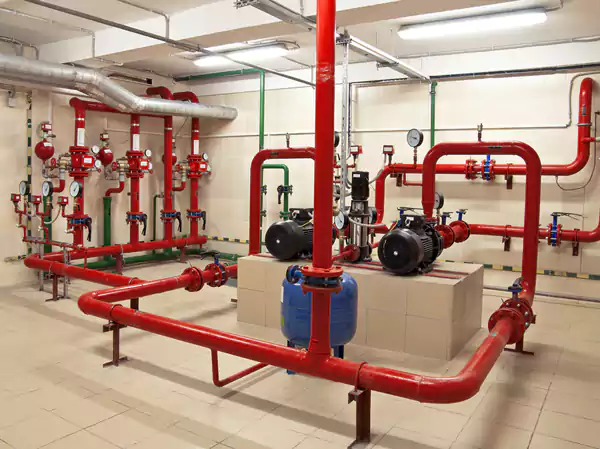
Sprinkler Systems
These systems consist of water pipes installed throughout a building, with heat-sensitive sprinkler heads. When the temperature rises due to a fire, the sprinkler head releases water to control or extinguish the flames.Wet Sprinkler Systems :
These are the most common type, with water always present in the pipes, ready to be discharged when a fire is detected.
Dry Sprinkler Systems :
These systems use pressurized air or nitrogen in the pipes, and water is released only when a heat-activated sprinkler head is triggered.
Pre-action Sprinkler Systems :
These systems require two steps to activate: first, the detection system must sense a fire, and then the sprinklers open when a fire is confirmed.
Deluge Sprinkler Systems :
These systems release a large volume of water simultaneously over the entire protected area when a fire is detected.
Fire Extinguishers :
Portable fire extinguishers are essential for quickly tackling small fires before they escalate. They come in various types, such as water, foam, dry chemical, CO2, and more, designed to combat different types of fires.Fire Suppression Systems :
These systems are designed for specific applications and use agents like clean agents (e.g., FM-200 or Novec 1230), carbon dioxide (CO2), or dry chemical agents to suppress fires in critical areas like data centers, server rooms, and industrial facilities.
Fireproofing and Passive Fire Protection :
These solutions involve using fire-resistant materials and coatings to slow down the spread of fires and protect structural elements.
Fire Suppression Sprays :
Specialized fire suppression agents are sprayed onto fires to cool them down and prevent re-ignition. Examples include water mist systems and foam suppression systems.
Gas-based Suppression Systems :
These systems release fire-extinguishing gases, such as clean agents (e.g., FM-200) or inert gases (e.g., nitrogen or argon), to displace oxygen and suppress the fire.
Aerosol Fire Suppression :
Aerosol-based systems release fine particles that chemically interfere with the fire's combustion process, effectively extinguishing it.
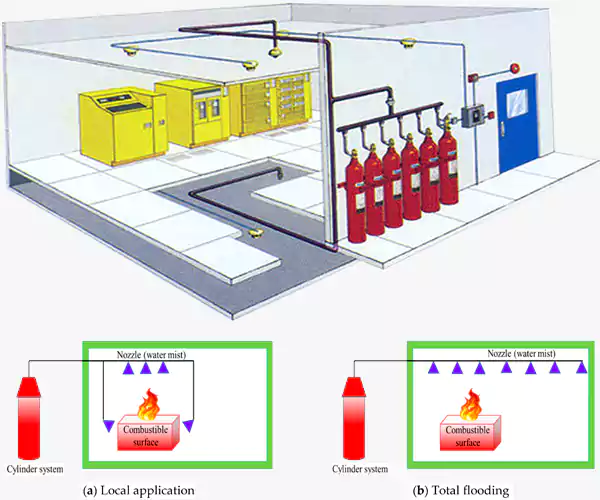
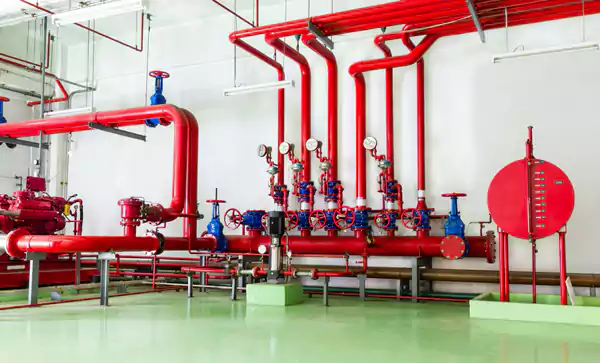
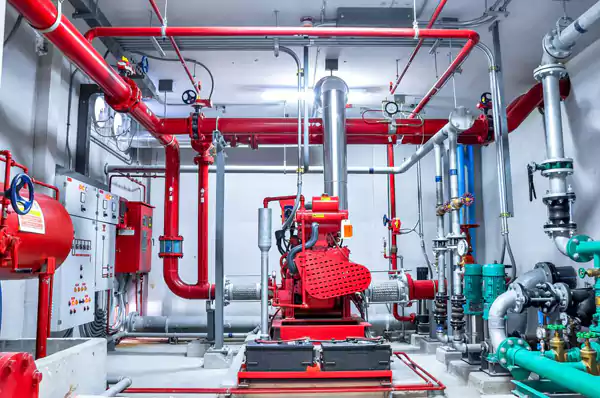
Fireproof Safes and Cabinets
These are designed to protect important documents and valuables from fire damage. It's essential to consult with experts and local fire safety codes and regulations when designing, installing, and maintaining fire detection and suppression systems to ensure they are effective and compliant with local standards. Regular maintenance and testing are crucial to ensuring the reliability of these systems.
Pre-action Systems :
These combine aspects of fire detection and suppression. They require both a fire detection event and a subsequent release signal before water or fire-extinguishing agents are discharged. Effective fire detection and suppression systems are tailored to the specific environment and potential fire risks. Regular maintenance, testing, and adherence to safety standards are essential to ensure the reliability and functionality of these systems in case of emergencies.
